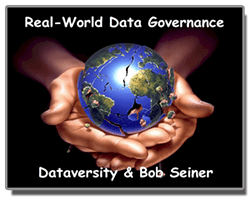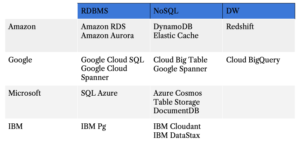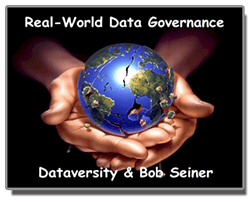
As businesses come to terms with climate change and its implications, they must develop ways to measure their impact on the climate and the environment. And while business stakeholders want to understand how corporate operations contribute to climate change, they also want assurances that companies have developed plans for climate change adaptation, especially emissions reduction. These two perspectives are required by several new and emerging regulations, creating compliance challenges for many organizations around the world. For this reason, environmental, social, and governance (ESG) topics now figure largely in boardroom discussions – and the measurement, monitoring, and reduction of a company’s carbon footprint is one of the biggest ESG topics of all.
ESG regulations have introduced new reporting requirements for businesses, many of which do not yet have the tools and reporting capabilities they need to efficiently meet these requirements. To help build these capabilities, businesses are increasingly turning to technology to help them collect and analyze the data needed for transparent climate-related disclosures. These technologies also enable companies to identify the greatest sources of emissions – or hotspots – under their control, so that companies can take measures to address them, which is the ultimate aim of the increased regulatory action.
Here are some ways that technology is being deployed to help companies address their reporting challenges.
Digital Transformation
Until recently, organizations either could not capture the emissions information they needed, or they had only a fragmented or incomplete view of their emissions. So, it was difficult for them to understand and measure their corporate carbon footprint.
However, technological advances have allowed businesses to gain the visibility and more efficient measurement and monitoring capabilities they need to report and reduce their greenhouse gas (GHG) emissions. For decades, data on different types of GHG emissions sat in disconnected silos, so collecting and analyzing it was difficult. Today’s technologies, however, not only collect data but also help organizations to make sense of it in a way that they weren’t able to before. Companies can now consolidate cross-functional data and forecast how a decision in one area could trickle down and impact others, which aids reporting efforts and unlocks better results.
Boosting Scope 1 and Scope 2 Emissions Success
Because of the regulatory focus on emissions reporting, measuring Scope 1 and Scope 2 emissions has become relatively commonplace. (Scope 1 emissions are the direct emissions from a company’s owned and operated facilities, and Scope 2 emissions are indirect emissions from purchased electricity, heating and cooling, and steam for a company’s use.) However, as organizations become more focused in their emissions reduction efforts, they need to deploy data not just to establish their baseline, but also to build concrete science-based goals and net-zero strategies.
This has become more complex as businesses have embraced innovative strategies to cut emissions. For example, many companies are reducing emissions by diversifying their energy mix and investing in renewable energy sources, such as solar and wind power. Others have opted to tackle emissions by upgrading equipment and optimizing industrial processes.
Yet, strategies for reducing emissions are not “set it and forget it” propositions. They must be actively monitored and adjusted to achieve an organization’s emissions reduction targets. Data and technology help businesses to determine how effective their strategies are and to identify areas for improvement when necessary.
Tackling Scope 3
Tackling Scope 3 – or value chain – emissions represents the next major emissions reporting and reduction challenge for businesses.
For most organizations, the majority of their emissions comes from their value chains. In fact, in CDP high-impact sectors, Scope 3 emissions constitute 75% of total Scope 1 + 2 + 3 emissions, on average. So, knowing exactly where their value chain emissions are coming from enables businesses to understand and improve their overall emissions performance. However, given the sprawling complexity of most supply chains, measuring Scope 3 emissions constitutes a major challenge.
Thanks to advances in data and technology, however, organizations can gain more insight into their value chains. For example, companies can now get actionable data for Scope 3 quantification and reduction by using physical and chemical quantities and industry-specific or company-specific emissions factors. Businesses can also gain a clearer picture of their Scope 3 emissions through life cycle assessment (LCA) automation, which produces carbon emission assessments of their entire product portfolios. LCA automation solutions provide more accurate assessments than the use of proxy data or assumptions such as spend-based or economic input-output data. And better assessments pave the way for more targeted – and more effective – action.
- SEO Powered Content & PR Distribution. Get Amplified Today.
- PlatoAiStream. Web3 Data Intelligence. Knowledge Amplified. Access Here.
- Minting the Future w Adryenn Ashley. Access Here.
- Source: https://www.dataversity.net/unlocking-emissions-reduction-performance-through-technology-and-data/
- :has
- :is
- :not
- :where
- 1
- a
- Able
- accurate
- Achieve
- Action
- actively
- adaptation
- address
- Adjusted
- advances
- aids
- All
- also
- an
- analyze
- and
- ARE
- AREA
- areas
- around
- AS
- assessment
- assessments
- Automation
- average
- Baseline
- BE
- become
- before
- being
- Better
- Biggest
- build
- business
- businesses
- but
- by
- CAN
- capabilities
- capture
- carbon
- carbon footprint
- chain
- chains
- challenge
- challenges
- change
- chemical
- clearer
- Climate
- Climate change
- collect
- Collecting
- come
- comes
- coming
- Companies
- Company’s
- complex
- complexity
- compliance
- consolidate
- constitute
- contribute
- control
- Corporate
- could
- Creating
- Cut
- cycle
- data
- DATAVERSITY
- decades
- decision
- deploy
- deployed
- Determine
- develop
- developed
- different
- difficult
- direct
- Disclosures
- do
- down
- Economic
- Effective
- efficient
- efficiently
- efforts
- either
- electricity
- emerging
- emission
- Emissions
- enable
- enables
- energy
- Entire
- Environment
- environmental
- equipment
- ESG
- especially
- establish
- exactly
- example
- facilities
- factors
- Figure
- Focus
- focused
- Footprint
- For
- Forecast
- fragmented
- from
- Gain
- GAS
- get
- GHG
- GHG emissions
- given
- Goals
- governance
- greatest
- greenhouse gas
- Have
- help
- How
- However
- HTTPS
- identify
- Impact
- implications
- improve
- improvement
- in
- increased
- increasingly
- industrial
- industry-specific
- information
- innovative
- insight
- into
- introduced
- investing
- IT
- ITS
- jpg
- just
- Knowing
- largely
- Life
- major
- Majority
- make
- many
- measure
- measures
- measuring
- Meet
- monitored
- monitoring
- more
- more efficient
- most
- necessary
- Need
- needed
- net-zero
- New
- next
- now
- of
- on
- ONE
- only
- operated
- Operations
- optimizing
- or
- organizations
- Others
- overall
- owned
- performance
- perspectives
- physical
- picture
- plans
- plato
- Plato Data Intelligence
- PlatoData
- portfolios
- power
- processes
- Product
- provide
- proxy
- purchased
- reason
- recently
- reduce
- reducing
- reducing emissions
- regulations
- regulatory
- relatively
- Renewable
- renewable energy
- report
- Reporting
- represents
- required
- Requirements
- Results
- scope
- sense
- several
- So
- Social
- solar
- Solutions
- some
- Sources
- stakeholders
- Steam
- strategies
- such
- supply
- Supply chains
- Take
- targets
- technological
- Technologies
- Technology
- terms
- than
- that
- The
- the world
- their
- Them
- These
- they
- Through
- to
- today’s
- tools
- Topics
- Total
- transparent
- Turning
- types
- ultimate
- under
- understand
- unlocking
- unlocks
- use
- using
- value
- View
- visibility
- want
- was
- Way..
- ways
- when
- which
- while
- wind
- wind power
- with
- world
- yet
- zephyrnet













